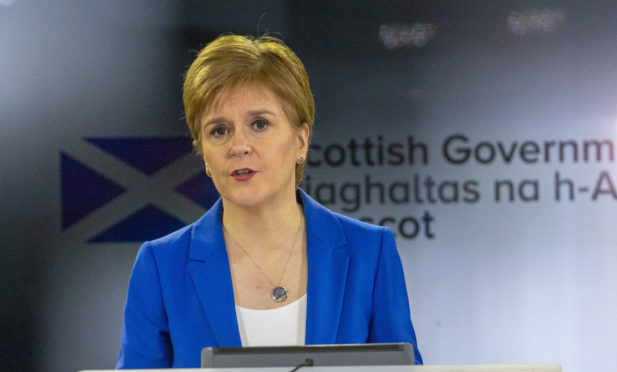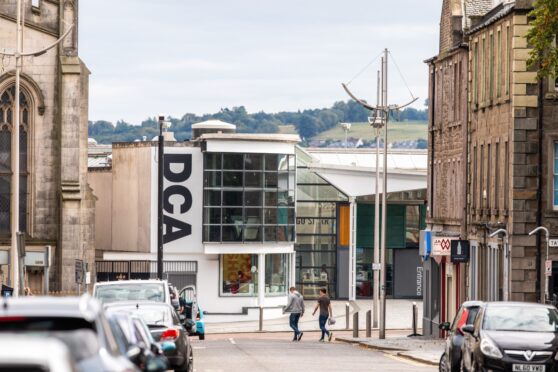Around this time last year my mother-in-law was seeing out her final days in the protective embrace of her care home outside Dundee.
As much as she is still missed, her whole family takes comfort from the fact she did not have to suffer the pandemic, which is laying waste to the elderly in particular and forcing them to spend precious weeks isolated from their relatives.
Betty, whose home recently became yet another casualty of coronavirus, would have been in the eye of the storm.
The care homes crisis has been developing for months but took on a new urgency two weeks ago when the National Records of Scotland (NRS) showed for the first time that more than half of the country’s coronavirus deaths were happening in such institutions. In Scotland, they now account for nearly six in 10 new coronavirus deaths.
When confronted with the figures a fortnight ago, Nicola Sturgeon said they partly reflected the fact the number of deaths linked to the virus in hospitals seemed to be declining. This sounds like an attempt to deflect criticism, from a government that is not on top of the tragedy unfolding among the most fragile demographic.
Concerns have long been raised about the lack of testing in old peoples’ homes in Scotland compared to England, where all staff and residents can be tested, even if they don’t have symptoms. Guidance published on the government’s website over the weekend said hospital patients could still be moved to care homes before receiving the results of coronavirus tests, and that only one test was necessary.
Health Secretary Jeane Freeman, questioned on the BBC Politics Scotland programme on Sunday about the messaging, first said she had not seen the advice, then she claimed it had been published in error. There is no excuse for such ministerial ignorance, given the amount of lobbying by politicians and care home staff for better testing.
Some care home owners are culpable too. HC-One, the UK company which owns the Skye home where six patients have died of coronavirus, admitted it had brought in workers from around the country after lockdown and conceded it had “not always got things right”.
But the buck stops with the government when it comes to providing mass testing, along with adequate supplies of PPE. On Sunday, there were just 2,346 tests carried out by NHS Scotland in hospitals, care homes or the community, compared to 100,490 UK tests. When will testing be ramped up here?
In another move ministers must now be regretting, some 300 hospital patients were discharged to care homes in a rush to free up beds prior to the coronavirus outbreak.
The SNP leader’s consternation was obvious at last week’s First Minister’s Questions, when Labour MSP Neil Findlay raised concerns for residents like his own mother over the discharge of people into care homes.
Sturgeon was urged during that Holyrood session to focus all unused testing resources on care homes, but since then her attention has been diverted again.
As the spread of the virus decreases in the wider community, the pockets that remain at high risk should be the government’s priority.
But Sturgeon has instead chosen to direct her energies away from Scotland’s problems and towards London, devoting most of Monday’s press briefing to her disagreement with Boris Johnson over exiting the lockdown.
Her explanation for keeping Scots at home while England begins to enjoy post-lockdown freedoms was all about people’s safety.
But for the vast majority of Scots there is no more danger here than there would be south of the border, as the all-important R (reproduction) value continues to drop.
A doctor at one of Scotland’s biggest hospitals, the Edinburgh Royal Infirmary, told a patient last week that his Covid-19 wards were emptying, taking in three to five people a day compared to 50 at the pandemic’s peak.
The continuing crisis in care homes is skewing the R number, although Sturgeon refuses to reveal how this is calculated or to give any regional breakdown. In England, the R rate among the wider population is stable at around 0.5, but cases in care homes have reportedly driven the overall number up to 0.9.
Scottish Conservative leader Jackson Carlaw asked the first minister whether Scotland’s apparently stalling R number was related to the “appalling rate of infection and loss of life in Scotland’s care homes”.
When will the public be treated to the truth?
New information, reported in this paper on Tuesday, that more than 2,000 deaths in Scotland could have been prevented following a global conference in Edinburgh in February, was not made public.
If Sturgeon wants to protect Scots, she must be transparent about why our infection curve remains higher, and address her government’s failure to safeguard this country’s most vulnerable citizens.










